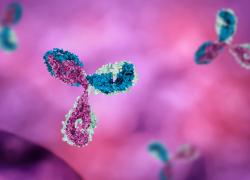
ASCO 2024 – Blenrep “should return” to the US
Dreamm-8 is heralded as marking doctors’ ability to deal better with Blenrep’s toxicities.
Dreamm-8 is heralded as marking doctors’ ability to deal better with Blenrep’s toxicities.

After Blenrep’s surprise win in the Dreamm-7 and 8 studies the withdrawn GSK drug should return to the market, ASCO has heard. The view was expressed at a press briefing ahead of the full Dreamm-8 data being presented at an ASCO late-breaker today.
Whether multiple myeloma doctors, familiar with Blenrep’s troubled history, would agree to prescribe the anti-BCMA ADC is a separate question. But Dreamm-8’s lead author argued that Blenrep’s notable ocular toxicity was becoming better understood, and the fact Dreamm-8 succeeded while the earlier Dreamm-3 trial failed has been put down partly to the ability to mitigate this side effect.
Protocols have been developed to deal better with the ocular toxicities, Dr Suzanne Trudel, from University of Toronto, told the ASCO press briefing. This means that patients are able to continue on treatment and derive a benefit, avoiding the early disease progression seen in the Dreamm-3 trial, whose failure caused Blenrep’s withdrawal in late-line multiple myeloma.
The history of ADC development has shown that you need to “play around and figure out how to dose-modify to reduce toxicities, and I think we’re getting to that point with [Blenrep] now”, she stated. Ocular toxicity is now reversible with appropriate dose modifications, she added.
Asked whether Blenrep should return to the market she said: “Yes.” GSK hasn’t spelled out whether any resubmitted filing applications have been accepted for review.
Second line
While Dreamm-3 was conducted in third-line multiple myeloma, Dreamm-7 and 8 tested Blenrep in second-line settings, and the Dreamm-7 data were presented at an ASCO virtual plenary in February.
In Dreamm-8 Blenrep was combined with Pomalyst, and this study was toplined positive for PFS versus Velcade plus Pomalyst in March. The ASCO late-breaker has revealed a reduction in risk of progression or death for Blenrep of 48% (p<0.001).
Dreamm-8 survival curves
Though the data are insufficiently mature for OS to be analysed there is a hopeful sign, with a statistically non-significant 23% in risk of death seen at the point at which Dreamm-8 was halted for efficacy.
Ocular toxicity of any grade led to dose interruptions or delays in 83% of Blenrep versus 1% of control patients, while that leading to dose reduction was seen in 59% versus 0%. As testament to how such modifications are helping manage this tox, only 9% of Blenrep patients stopped treatment because of eye toxicity.
Assuming that Blenrep is resubmitted it will now be up to regulators to decide whether to give the drug a reprieve. How a relaunched Blenrep might fare against the likes of Carvykti, Tecvayli and other multiple myeloma Car-T and bispecific therapies is a separate issue, of course.
1853













